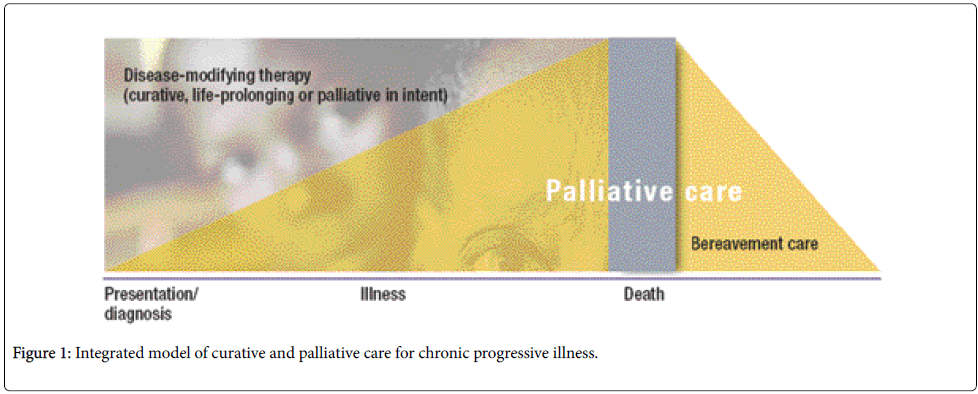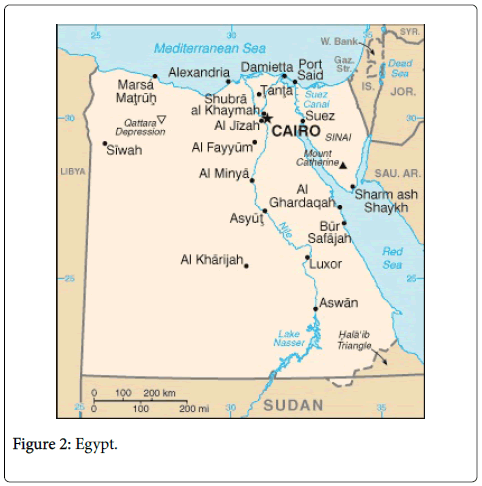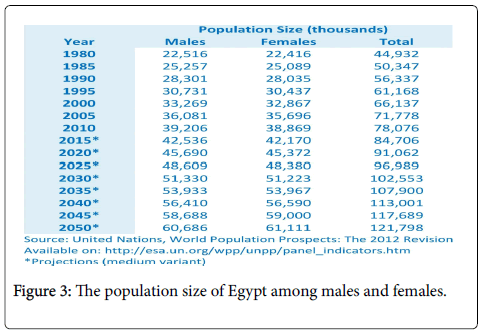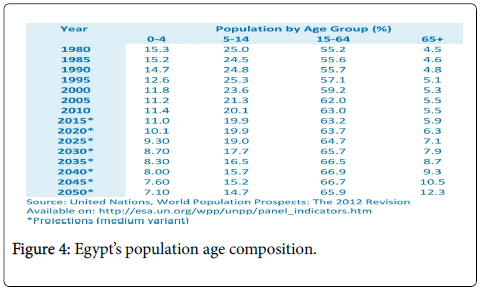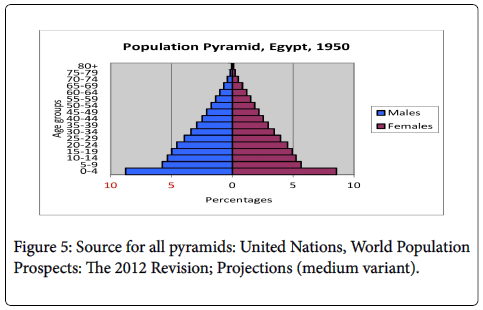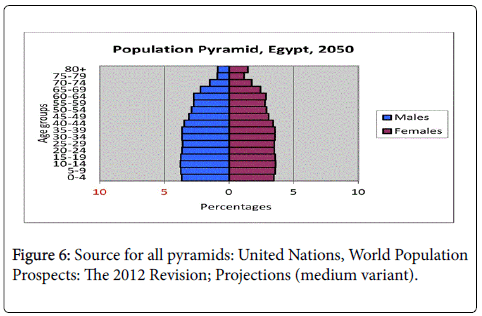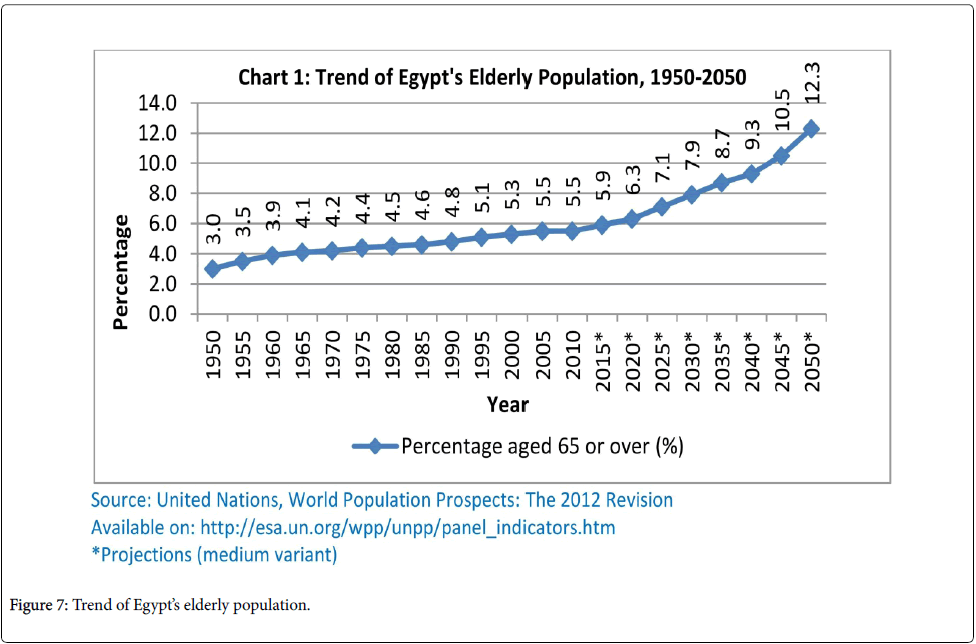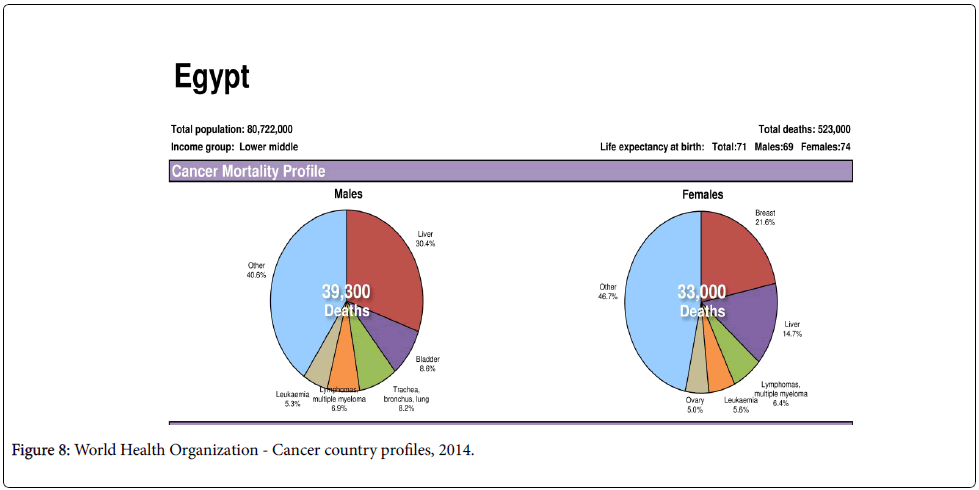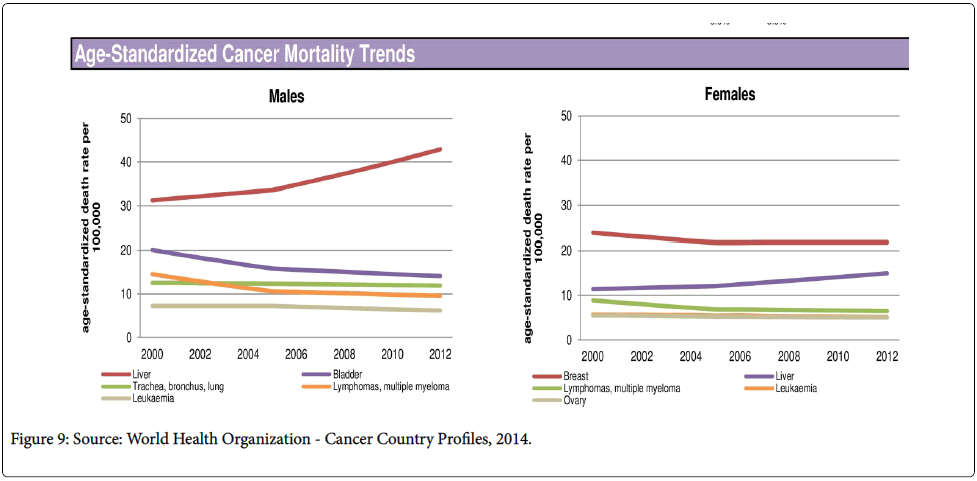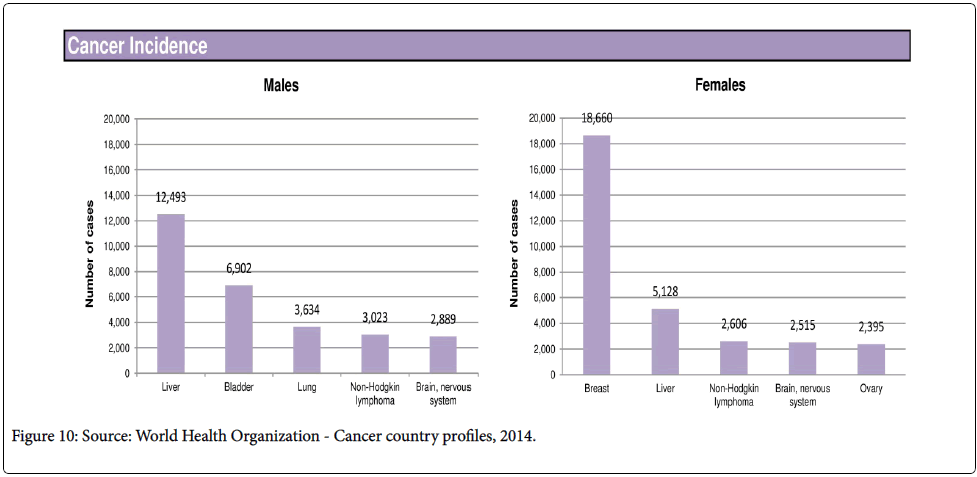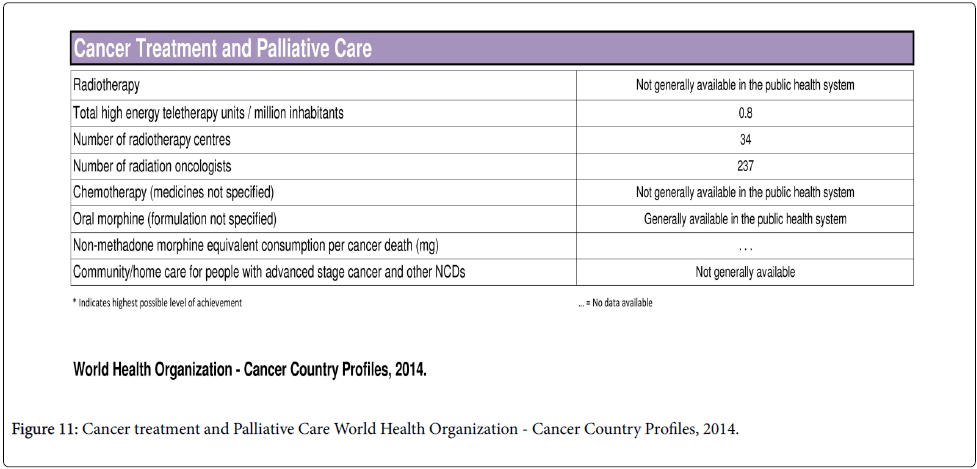Review Article Open Access
Current Status of Palliative Care Nursing in Egypt: Clinical Implementation, Education and Research
Karima Elshamy*
Medical Surgical Nursing, Faculty of Nursing, Mansoura University, V P of African Organization for Research and Training in Cancer of North Africa, Founder and Executive Director of Egyptian Society for Women’s Health, Egypt
- Corresponding Author:
- Elshamy K, DNSc
Assistant Professor of Medical Surgical Nursing
Faculty of Nursing, Mansoura University, Egypt
Tel: +2 01157271778
Email: karima_elshamy2002@yahoo.com
Received Date: October 06, 2015; Accepted Date: November 21, 2015; Published Date: November 25, 2015
Citation: Elshamy K (2015) Current Status of Palliative Care Nursing in Egypt: Clinical Implementation, Education and Research. J Palliat Care Med S5:005. doi:10.4172/2165-7386.1000S5005
Copyright:© 2015 Elshamy K, This is an open-access article distributed under the terms of the Creative Commons Attribution License, which permits unrestricted use, distribution, and reproduction in any medium, provided the original author and source are credited.
Visit for more related articles at Journal of Palliative Care & Medicine
Abstract
Cancer in the developing world is characterized by far more advanced stages at diagnosis, fewer allocated resources for prevention and treatment, and higher incidence than in countries with more developed health systems. In Egypt, it is already and will become an important health problem not only in terms of rank order, but also in terms of incidence and mortality. The commonest sites were liver among men and breast among women. During the period 2013–2050, population of Egypt is expected to increase to approximately 160% the 2013 population size. Applying the current age-specific incidence rates to successive populations would lead to a progressive increase in number of incident. The resources for cancer control in Egypt are directed almost exclusively to treatment. Most cancers present at an advanced stage (stage III and IV) when cure is improbable even with the best treatments. Comprehensive cancer care requires the integration of palliative care practices and principles across the trajectory of the cancer experience and may be the sole focus of care for those patients with advanced incurable disease. As the incidence of cancer increases worldwide and the burden of cancer rises, especially in low and middle resource countries, the need for palliative care is greater than ever before and this care is most effectively provided by a multidisciplinary team. According to WHO, 40% of cancers could be avoided (prevention), 40% could be cured (if detected early) and the rest should be managed with palliation. So, expansion of palliative care services to a larger number of patients and illnesses throughout the country, considering home-based palliative care service is urgently and badly needed, strengthening health care systems; focusing on patient centred care, education and training to all levels of health care professionals.
Keywords
Palliative care; Clinical aspects; Education; Research; Egypt
Introduction
Cancer is a global and international problem. It is the second leading cause of death worldwide after heart and vascular disease. It accounted for 8.2 million deaths in the year 2012. Among the most frequent causes of death are liver, stomach, colorectal and breast cancers. Unfortunately, annual cancer cases are expected to rise from 14 million in 2012 to 22 million within the next two decades [1]. Diagnosis of cancer and its treatment can have a devastating impact on the quality of a patient’s life, as well as on the lives of families and other care givers. Patients face new fears, uncertainties and may have to undergo unpleasant and debilitating treatments. Therefore, patients and their families need access to support from the time that cancer is first suspected, through all stages of treatment to recovery or, in some cases, to death and into bereavement [2]. Patients with advanced cancer experience a range of complex problems that cannot always be dealt with effectively by generalist services. Therefore, they require a range of services to ensure that their physical, psychological, social and spiritual needs are met effectively and to enable them to live and die in the place of their choice. Thus, hospices and specialist palliative care services should be accessible and available [3].
Palliative care is the active holistic care of patients with advanced, progressive illness. Management of pain and other symptoms and provision of psychological, social and spiritual support is paramount.
The goal of palliative care is achievement of the best quality of life for patients and their families. Many aspects of palliative care are also applicable earlier in the course of the illness in conjunction with other treatments [4]. Palliative care goes beyond the traditional medical model to focus on psychosocial issues, spiritual matters, medical decision-making, and on the relief of suffering in all its dimensions throughout a person’s illness [5]. Because of its focus on the whole person, more experts are advocating that a palliative approach to care could and should be integrated into care for all people with chronic, life-limiting conditions (including cancer). The rationale for integrating palliative care into chronic disease management is the recognition that people with chronic diseases often have a long illness trajectory and, during that time, may have different palliative care needs. As their disease progresses, they may experience a complex range of social and emotional needs including isolation, decreased independence and burden on family members. Most people with chronic illnesses other than cancer often reach the terminal phase of their life without having been offered many of the physical and social resources available through palliative care [6].
Definition of palliative care
Palliative care is an approach that improves the quality of life of patients and their families facing the problem associated with lifethreatening illness, through the prevention and relief of suffering by means of early identification and impeccable assessment and treatment of pain and other problems, physical, psychosocial and spiritual. Palliative care: provides relief from pain and other distressing symptoms; affirms life and regards dying as a normal process; intends neither to hasten or postpone death; integrates the psychological and spiritual aspects of patient care; offers a support system to help patients live as actively as possible until death; offers a support system to help the family cope during the patients illness and in their own bereavement; uses a team approach to address the needs of patients and their families, including bereavement counselling, if indicated; will enhance quality of life, and may also positively influence the course of illness (Figure 1), is applicable early in the course of illness, in conjunction with other therapies that are intended to prolong life, such as chemotherapy or radiation therapy, and includes those investigations needed to better understand and manage distressing clinical complications [7].
An overview of Egypt
The land and geography: Egypt lies in North Africa bordering the Mediterranean Sea and Red Sea, is between Libya and the Gaza Strip and North of Sudan. Egypt includes the Sinai Peninsula which forms a “land bridge” in Southwest Asia. 90% of Egypt is desert; the majority of the people live near the banks of the Nile River where suitable land for cultivation can be found. The majority of the 80 million Egyptians reside in 3% of the total geographic area. Cairo, the capital city and Alexandria are the major inhabited centers (Figure 2).
Language: For almost 13 centuries Arabic has been the written and spoken language of Egypt for both the Egyptian Christian and Muslim. However, most Egyptians understand and speak English and French. English and French are widely used for business and by educated urbanites. [8].
Religion: Approximately 85 percent of the populations of Egypt are Moslems. Most of the balance, about 9 million, is Christian Orthodox who belongs to the Coptic Church. In most cities in Egypt, mosques and churches can be found next to each other. There are also some synagogues since a small Jewish community still lives in Egypt [8].
Medicine and health care
Naturalistic and social causes of sickness include bad luck, stress and bereavement; for children loss of love, germs, wind and drafts, hot/ cold, imbalance and fear. Supernatural causes are Evil Eye (most Arabs believe in Evil Eye and keep special amulets during illness), God’s punishment for sins and the curse of the devil.
Illness and suffering are believed to be god’s will.
Mental illness is highly stigmatized and help is sought in advanced stage. The Zar, a ‘trance religious ceremony’, using drumming and dancing is thought to cure mental illness caused by a demon.
Disabled are treated with compassion and indulgence, and kept from the public as those with genetic defects; genetic counselling is generally refused.
Institutional care is shunned. Egyptians will likely combine the present health system with traditional beliefs and customs for the purpose of healing.
Camphor ointment, herbs as teas and poultices are used to treat cold, abdominal discomfort, musculoskeletal aches and pains.
In Egypt, there are the traditional health practitioners such as seers and spirit healers. When the Arabs came to Egypt, Arabic medicine was practiced. These traditional herbal medications are available in Attar shops and an increasing number of Egyptians are seeking herbal remedies because they are cheap and viewed as safer.
Medical professionals should avoid frank discussions of diagnosis and poor prognosis.
Families may prefer to tell the information to the patient, but may ask a healthcare provider to be in attendance.
The information should be given gradually and in a prolonged manner. Arab patients express their pain comparing it to fire, knives, rocks and iron.
The patient’s concentration is on the present pain experience. The pain scale response may not indicate the actual acuity, for example, minor pain may be reported as a 10. Pain injections are thought to be more effective than pills.
Most patients and families may avoid activities after surgery such as ambulation, coughing, and physical therapy for fear of pain and prolonging the disease.
Admittance of depression and symptoms of depression are never disclosed. Verbal permission based on trust is more acceptable than written consent.
Patients and their families do not like knowing about the potential complications before a medical procedure because it is thought to be bad luck [9].
Death and the afterlife
Death is feared, accepted as “God’s will”, but believe death should be delayed by biomedical interventions. Critically ill patients may prefer to die in the hospital. Families will not openly grieve before death of family member; they will however grieve openly and loudly and a private room may be beneficial. After death Christians and Muslims try to bury the body the same day. Koran reading may be an indicator of the Islamic condolence sessions. Condolences are expressed without delay, and again after 40 days and after a year.
Christian Families may ask a minister or priest visit. Egyptian Muslims do not need an Imam present. Egyptian Muslims handle the body by same gender Muslim with modesty; oropharyngeal orifices are sealed with cotton, the body is covered with a sheet and turned towards Mecca [9].
An Overview and Profile of Frequent Cancers
The population size of Egypt: Currently, Egypt is experiencing significant size, age structure changes that will have major implications for its socioeconomic development. The population size of Egypt increased from 44.9 million in 1980 to approximately 78.1 million in 2010, and 80,722,000 in 2014.It is projected that in 2050, the population size of Egypt will reach approximately 121.8 million as shown in (Figure 3) [10].
Mortality transition in Egypt: Life Expectancy at birth in Egypt gained 10 years from the period 1980-1985 to the period 2005-2010, increasing from 59.9 years to 69.9 years. It is expected to reach 77.3 years in 2045-2050 [10].
Egypt’s population age composition: The proportion of the population under 15 years of age has been decreasing since 1980 and is estimated to continue declining to 2050. At the same time, the proportion of the working-age population (15-64) has been increasing since 1980. It is projected to reach 66.9 per cent in 2040 then it will decline to 65.9 per cent in 2050. The proportion of the elderly population (65+) has also been increasing and is expected to reach 12.3 per cent in 2050.
The age distributions in Egypt vary widely with major differences in the percentage of young and old as seen in this table. Hence, currently there is less cancer, but the expected change in demographics over the next 20–30 years is likely to result in an explosive increase in noncommunicable diseases such as cancer and heart disease, (Figure 4) [10].
Changing age structure: In 1950, the pyramid had a wide base signalling the structure of a young population. In 2050, the pyramid is expected to narrow down (Figures 5 and 6) [10].
Egypt’s elderly population: The percentage of the Elderly population (65+) in Egypt increased from 3.0 per cent in 1950 to 5.5 per cent in 2005 and remained as such in 2010. It is projected to continue increasing to reach 12.3 per cent in 2050 (Figure 7) [10].
Cancer mortality profile: According to World Health Organization - Cancer Country Profiles, 2014, 39,300 deaths were among males, and 33,000 deaths were among females as illustrated in Figure 8.
Age-standardized cancer mortality trends: According to World Health Organization - Cancer Country Profiles, 2014, (Figure 9) illustrates Age-Standardized Cancer Mortality Trends among males and females.
Cancer incidence: According to World Health Organization - Cancer Country Profiles, 2014, Figure 10 illustrates cancer incidence among males and females, breast was the highest among females, and liver among males.
Cancer treatment and palliative care: Figure 11 illustrates about the statistical details cancer treatment and palliative care.
Current Status of Palliative Care Nursing In Egypt
A-clinical implementation
In most of the world, the majority of the cancer patients present with advanced disease. For them, the only realistic treatment option is pain relief and palliative care. Effective approaches to palliative care are available to improve the quality of life for cancer patients. Lack of access to basic pain relief continues to make living and dying with cancer in Egypt a very different experience from that in developed countries.
The National Cancer Institute (NCI) in Cairo was established in 1969 as a specialized institute, affiliated with Cairo University. In 2004, palliative care was included in the oncology medical training programme at the National Cancer Institute at the University of Cairo. In 2006, there were two organizations providing hospice palliative care in Egypt: the Cairo Evangelical Medical Society (which has hospice facilities in Cairo and Alexandria) and the National Cancer Institute (which puts an emphasis on cancer pain relief).
In 2010, the NCI, Cairo has cared for 18 156 new patients which comprised 70-80% of all cancer patients in Egypt. A total of 70% of all new cancer patients were diagnosed with an advanced stage of the disease. NCI's first initiative towards the development of palliative care services was in 1981 when the first pain clinic was established as part of the Department of Anaesthesiology. This clinic handles 120-150 patients daily, while slow release morphine tablets are the only available pain medicine [11]. At the present, NCI is running a pain care clinic at its outpatient pain department. This clinic operates on a the capacity of a 24 hours/7 days basis, and its staff (multidisciplinary team) comprises pain management physicians, specialized nurses, clinical social workers, pharmacists, psychiatrists, dietitians and administrative manpower.
In addition, a hotline service was established, thus enabling easier access to the experts on the team. In addition to the NCI, Cairo, the Kasr Elaini Cancer Center in Cairo also runs a pain clinic and a palliative care service started in 2007. The new Children's Cancer Hospital 57357 in Cairo runs pediatric palliative care services including psychological support. The Cairo Evangelical Medical Society provides in-patient and day care hospice services (opened in 2001), while similar services are provided by the Elhadra Elromany hospice in Alexandria [11].
Palliative care in Egypt is in an early stage of development with very few palliative care activities available even in all of the above specialized Centres. At this stage, research is crucial to develop suitable palliative care models with respect to the needs, culture, and resources in Egypt. In addition, a range of health professionals, other workers, carers and volunteers provide palliative care services: nurses, including registered and non-registered nurses with and without specialized palliative care qualifications, medical practitioners, including specialist palliative care physicians, hospital-based specialist palliative care trainees, hospital-based non-specialists and general practitioners(GPs),health professionals, including psychologists, physiotherapists, occupational therapists and pharmacists, volunteers, carers, including both formal and informal carers. While palliative care can be provided to patients in a variety of settings, a distinction is commonly made between care provided in hospitals (which includes hospices or dedicated palliative care wards) and the community (such as in the patient’s home or in residential aged care facilities).
Opioid consumption: Figures in Egypt are among the lowest worldwide indicating largely inadequate cancer pain control. Based on the data published in the most recent annual report of the International Narcotics Control Board, the average opioid consumption in Egypt during 2008-2010 was 62 defined daily dosed for statistical purposes (S-DDD) per million inhabitants per day. With this Figure, Egypt was ranked 115th among 184 countries [12].
In Egypt, palliative care and cancer pain control are at an early stage of development. Very few services are available, and there are many barriers to be faced, such as limited opioid accessibility and availability for medical use. Palliative care is still misunderstood among health professionals, cancer patients and the public at large. One reason to that is because the term does not obviously communicate the intent of this clinical discipline, which is lending better quality of life while combating cancer.
The Society for the Management of Pain was founded in Egypt in 1980. A postgraduate training program was subsequently established to equip physicians with advanced knowledge and skills in pain management. Parenteral morphine is locally manufactured whereas oral preparations are imported. One Egyptian experience that could have possible implications for other Muslim communities is the success that Egypt has had in training patients' relatives to care for patients in their homes. A patient's relative is selected as the principal caregiver and is then given basic teaching on the disease and some tips on patient care at home. The home caregiver is provided with a booklet that contains a daily observation sheet, which is completed by the caregiver and reviewed by the health professionals weekly [13].
Practice: Only a few healthcare providers have adequate knowledge of pain assessment and management and palliative care, so, it is important to integrate pain and palliative care into the health unites.
Egypt has National Guidelines for the management of acute and chronic pain, management of other physical symptoms. New guidelines are currently worked out for End-of-Life Care and for home-based hospice services. National guidelines for palliative care were not initiated till now. The NCI, Cairo offers MD and Master degrees in pain management and palliative care has been incorporated in the curriculum of the oncology nursing program in the same institute.
Ethical, Religious and Cultural Issues
All patients probably undergo the stages of acceptance of terminal cancer in the same fashion. The difference between Egyptian and Western cultural practices would likely be in the culturally specific coping strategies. Ultimately, the physician and other healthcare providers have to assess the patient in his cultural context and find out what would help the patient the most to go through the terminal phase of the disease. The community bond amongst Muslims is very strong, most end of life issues are preferably taken care at home amongst family members rather than in hospice facilities.
In dealing with a patient, a physician must take into account the degree of his cultural inclinations as well as that of his family in order to communicate and provide best medical treatment effectively. Invariably, communication and empathy are indispensable in achieving this. In an increasingly westernizing society, a physician should be wary of imposing generalized belief models on patients without first understanding their background and preferences.
Islam is the dominant religion in Egypt, and observant Muslims believe that having an illness represents an opportunity to enhance the Muslim's degree or expiating personal sins. Yet, Islamic teaching encourages Muslims to seek treatment when they fall sick, as it is believed that Allah did not send down a sickness but rather a medication for it [14]. Muslim's beliefs attribute to occurrence of pleasure and suffering to the will of Allah, and that every effort should be made to relieve suffering. Moreover, Islamic teaching considers the relief of suffering to be highly virtuous [15]. According to Islam, adults of both genders are granted the full right to accept or decline medical intervention. In reality, close family members are more often directly involved with the decision-making process. Generally, parents, spouses and older children, in descending order, have greater decision-making power than the other members of the family [16].
Islamic teaching encourages the community members to visit the sick and the sick to welcome their guests. Patients, therefore, may entertain a larger number of visitors during their hospitalization [14]. The use of drugs that might affect consciousness is strictly prohibited in Islam. However, medically prescribed opioids are generally permissible because of their necessity. Usually, patients and families accept the use of opioids for symptom management, provided the rationale for their use is clearly explained to them. Of great importance is to explain patients and their relatives the possible side effects, as there are great concerns about an imposed drowsiness [17].
Issues that relate to end-of-life are compounded spiritually and ethically, and are open for interpretations. While discussing the prognosis of the loved one, Muslim families are often sceptical about receiving clear cut massages from the treating physician. The former are for the most part more comfortable receiving less concrete information and quite often would respond with: ‘This is in Allah's (God's) hands, and we are not to predict the fate of the patient’. Such a response is largely due to the Islamic belief that the life expectancy of every person is only up to Allah, who is the one to determine the timing of death. Families, however, are very appreciative being updated as to the patient's condition, in order to enable them to carry out the traditional funeral rites. Taking all of the above into consideration, caregivers in Egypt exercise all the precautions and sensitivity while talking to terminally ill patients and their families [11].
Culture and Religion on Commutating Bad News At the End of Life
In Islamic ethics, family and community are intrinsically linked with each individual’s well-being [18]. Similarly, in many Asian cultures, illness is a shared family event rather than an individual occurrence [19]. The family provides a source of strength, hope and connectedness to others. Accordingly, the principle of autonomy does not bear the same weight as it does in many Western cultures and thus the family is the locus of the decision-making process [20]. A Japanese study [21] found that 46% of the population felt it was the family’s duty to provide ‘a protective role in shielding the patient from a painful diagnosis [18]. Equally, in Ethiopia and Saudi Arabia, information regarding a patient’s illness belongs to the family, who then use the information in the best interests of the patient. Physicians, consequently, respect the ‘autonomy of the family as a unit’ [20].
Methods to improve application of palliative care principles
Palliative care guidelines provide a framework for the care needed for patients with serious and life-threatening cancers. Approaches to improving the application of this care include education, training, and research endeavours.
Palliative Care Education and Training
Undergraduate education: The concepts of pain have been integrated into the education of nurses at some faculties and schools of nursing. . Little attention has been paid to the education and training of health professionals on palliative care. Little information has received in undergraduate palliative Care education. Most have acquired knowledge and skills after graduation
Postgraduate education: The concepts of pain, palliative care and end-of-life content are integrated throughout most of contents in Egyptian nursing faculties for postgraduate nursing curricula. In addition, assessment and management of palliative nursing is accomplished through palliative Care clinical education, bedside teaching, and working in a variety of clinical areas, conferences and workshops. Some of Egyptian nursing faculties offer a hospice and palliative care courses. Students have the opportunity to chose and interact with palliative care team in hospitals, attend palliative care training program, and investigate palliative care and hospice care as delivered at hospital settings. The faculty of nursing palliative care training program and end-of-life (EOL) care focuses on the following contents:
Pain management that include: definitions of pain, current status of and barriers to pain relief, components of pain assessment, specific pharmacological and non-pharmacological therapies including concerns for different patients
Symptom management: Detailed overview of symptoms commonly experienced at the EOL, and for each, the cause, impact on quality of life, assessment, and pharmacological/non-pharmacological management.
Ethical/Legal issues: Recognizing and responding to ethical dilemmas in EOL care including issues of comfort, consent, prolonging life, withholding treatment; euthanasia, and allocation of resources; and legal issues including advance care planning; advance directives, and decision making at EOL.
Cultural considerations: End-of-life care, multiple aspects of culture and belief systems, components of cultural assessment with emphasis on patient/family beliefs about roles, death and dying, afterlife, and bereavement.
Communication essentials: Communication at EOL, attentive listening, barriers to communication, breaking bad news, and interdisciplinary collaboration.
Nursing care at the end of life: Overview of death and dying in Egypt, principles and goals of hospice and palliative care, dimensions of and barriers to quality care at EOL, concepts of suffering and healing, role of the nurse in EOL care.
Grief, loss, bereavement: Stages and types of grief, grief assessment and intervention, and the nurse's experience with loss/grief and need for support.
Achieving quality care: End-of-life challenge for nursing in EOL care, availability and cost of EOL care, the nurses' role in improving care systems, opportunities for growth at EOL, concepts of peaceful or "good death," "dying well," and dignity.
Preparation and care: Time of death nursing care at the time of death including physical, psychological, and spiritual care of the patient, support of family members, the death vigil, recognizing death, and care after death.
Currently there is no postgraduate training in pain management or palliative care in Egypt. To effectively manage the large number of patients in need of palliative care services, Egypt should have adequate numbers of specialists in pain management and palliative care who in turn can support the primary care providers in the management of difficult and complex pain patients across Egypt. It is suggested that postgraduate training programs be developed for both doctors and nurses who wish to acquire special expertise in pain management and palliative care. Certification of healthcare workers in pain management and palliative care should be instituted. It is recommended that palliative care should be integrated into the undergraduate training provided by all medical and nursing schools in Egypt, and to be integrated into all examinations of doctors and nurses.
Research
Current status
Egypt has significant quantitative and qualitative palliative care researches that were done by nursing, medical, psychological professionals these researches are directed at improving the care of seriously ill patients and their families, improving the clinical practice, symptom control in advanced cancer, and interventions for ICU patients and families. These researches provide evidence-based practices geared toward the specific needs of patients, and to increase awareness of palliative care programs and the special needs of nurses who care for dying.
Need for additional research in palliative care
Further research studies are needed to explore strategies to decrease work-related stress in nurses caring for dying patients. Another beneficial study could involve clearly identifying the role of the nurse in paediatric palliative care programs and establishing protocols for staff development. These studies may also discover other innovative ways to increase satisfaction of patients, family members, and nurses overall.
There is much need to increase a robust research agenda, targeting resource-poor areas, where disease burden and poverty are high and where health care is limited. Nurses are in a key position to do this, as they are globally advocating for increased awareness of palliative care as a public health issue and a human right, educating citizens about vaccinations and other preventive measures, and consulting in the development of competencies for this care. Targeted areas may include: Exploring the relationship of pain and other distressing symptoms on quality and quantity of life, independence, function and disability, and developing interventions directed at their treatment in patients with advanced and chronic illnesses; Studying methods of improving communication between adults living with serious illness, their families and their healthcare providers; Evaluating models and systems of care for patients living with advanced illness and their families. Future research questions include the following: What are the barriers to pain and other symptom management related to palliative care? Why do some resource-poor countries have excellent availability of opioids for medical purposes and other countries do not? What role do nurses play in advocacy in promoting palliative care? What are the needs of dying patients and their families in Egypt? What interventions need to be developed/made available to meet these needs?
Challenges for Implementing Palliative Care
Healthcare systems and policies: the big challenge to Egyptian palliative care professionals is the development of hospice systems along with well-organized home-based services, lack of national health policies in support of palliative care development, focus on acute care, poor understanding and awareness of the role of palliative care in community, lack of legislation and accreditation of this new specialty discipline, lack of facilities and resources for palliative care, lack of communication with concerned departments, palliative and end-of-life care not prioritized in healthcare strategies, lack of long-term care and community services, no statistical data about how and where patients die, how many receive palliative care, and the characteristics of the caring process, and insufficient supplies and equipment. Raising the awareness and knowledge of palliative care among health care professionals and providers; monitoring and surveillance of the implementation of the national palliative care policy; introducing more core palliative care curricula at all levels of all health professional training; and educating the public.
Healthcare professionals: inadequate training for both health care professionals and general public about the necessity and importance of palliative care as integral part of cancer care, palliative care as a discipline is being seen as less prestigious, lack of interdisciplinary concepts and teams, negative attitude towards caring for dying patients fear of opioid use (fear of side effects and/or fear of prosecution), resources focused on curative treatments and acute care, and perceived sense of failure.
Patients and families: fear of addiction to opioids, fear of abandoning family members unrealistic hopes of cure, families also refuse admission to hospice which is considered as a place of death, isolated and unfriendly, diversity in religious interpretation of death and dying.
Poor accessibility of essential palliative care drugs: general lack of opioids and unavailability of opioids in remote areas, very strict opioid prescription and dispensing policies, lack of other essential medications lists, and poor accessibility of essential palliative care drugs. Other challenges include changing the current opioid dispensing regulation to enable emergency opioid prescription by phone or fax, and the expansion of palliative care services to a larger number of patients and illnesses throughout the country.
Lack of relevant training to healthcare workers: lack of palliative care education programmes at all levels, Lack of updated education and clinical training to both physicians and nurses.
Conclusion and Recommendations
Palliative care is an urgent humanitarian need worldwide for people with cancer and other chronic fatal diseases. Palliative care is particularly needed in places where a high proportion of patients present in advanced stages and there is little chance of cure.
Palliative care services should be provided from the time of diagnosis of life-threatening illness, adapting to the increasing needs of cancer patients and their families as the disease progresses into the terminal phase. They should also provide support to families in their bereavement. It is necessary to change the legislative system in Egypt in order to recognize and to integrate this new discipline.
The ministry of health and population should recognize palliative care as a new subspecialty for nurses, and expansion of palliative care services to a larger number of patients and illnesses throughout the country, considering home-based palliative care service is urgently and badly needed
Education and training of health professionals in palliative care should be provided by medical and nursing schools throughout the country. Postgraduate education in medicine and nursing and ensuing certification should be made available.
A close collaboration between medical and nursing associations to achieve this end will be needed and is highly recommended.
National Committee for Pain Relief and Palliative Care should be developed, and the latter committee should develop a national plan that involves education, clinical practice including opioids availability, accessibility and disposal, research, public policy, and evaluating and monitoring care plans and activities.
It is as important and essential to involve policy makers in the development of pain relief and palliative care services and clinics which meet the needs of the population in Egypt.
Encourage community share in the program by money donations, hospice places, volunteers and training.
Organize a national master or diploma degree in palliative care with reasonable training hours.
Palliative care guidelines provide a framework for the care needed for patients with serious and life-threatening cancers.
The coordination of palliative care services remains to be one of the most crucial aspects and one of paramount importance. As terminally ill patients and their families move between the different settings and healthcare agencies, they need the support and guidance of a healthcare professional familiar with their situation who can coordinate their care.
Effective palliative care services should be integrated into the existing health system at all levels of care, especially community- and home-based care. They should involve public and private sector and be adapted to the specific cultural, social and economic setting.
Approaches to improving the application of this care include education, training, and research endeavours.
Pain and palliative care education and training should be incorporated in the training curricula of all medical schools, family residents training program and all postgraduate oncology and other chronic disease nursing training program, also palliative-care certified physicians are going to be central in coordinating this kind of care, clinical nurse specialists in palliative care, who provide palliative care at both institutional and community settings throughout the country are also needed.
Changing the current opioid dispensing regulation and ensuring the availability of essential drugs,
In order to respond to the cancer priority needs in a community and make the best use of scarce resources, palliative care services should be strategically linked to cancer prevention, early detection and treatment services for both adults and children.
References
- http://globocan.iarc.fr/Default.aspx
- Ellershaw J, Wilkinson S (2003) Care of the Dying. A pathway to excellence. Oxford: Oxford University Press.
- Welsh Assembly Government (2001) Improving Health in Wales: a plan for the NHS with its partners. Cardiff:Welsh Assembly Government. January.
- World Health Organization (2002) National Cancer Control Programmes: policies and guidelines. Geneva: WHO.
- Smith TJ, Temin S, Alesi ER, Abernethy AP, Balboni TA, et al. (2012) American Society of Clinical Oncology Provisional Clinical Opinion: The Integration of Palliative Care into Standard Oncology Care 30: 880-887.
- Fitzsimons D, Mullan D, Wilson JS, Conway B, Corcoran B, et al. (2007) The Challenge of Patients' Unmet Palliative Care Needs in the Final Stages of Chronic Illness. Palliative Medicine 21: 313-322.
- World Health Organization (2003) National Cancer Control Programmes: policies and guidelines. Geneva: WHO.
- World Health Organization (2013) The Country Cooperation Strategy.
- http://libraryguides.umassmed.edu/content.php?pid=94770&sid=1140723
- http://esa.un.org/wpp/unpp/panel_indicators.htm
- Egypt Health Sector Reform Program (2003) MOHP.
- Fahmi R, Mostafa K.A (2012) Palliative cancer care in Middle Eastern countries: accomplishments and challenges. Annals of Oncology 23: 15–28.
- Tawfik MO (1993) Egypt: status of cancer pain and palliative care. J Pain Symptom Manage 8: 409-411.
- International for Narcotics Control Board (2011) Narcotic drugs: Estimated world requirements for 2011 statistics United Nations, New York.
- Daher M (2010) Challenges and barriers for pain management in cancer patients. J PediatrHematolOncol32: 425–428.
- Tuncer M, OzgulGultekin M (2011) National Cancer Control Program 2009–2015, Turkish Ministry of Health Publication, Ankara.
- Ozgul N, Koc O, Gultekin M, Goksel F, Kerman S (2011) Opioids for cancer pain: availability, accessibility and regulatory barriers in Turkey and the Pallia-Turk Project. J PediatrHematolOncol33: S29–32.
- Flynn P, Betancour H, Tucker J, Garberoglio C, Riggs M (2007) Culture, emotions, and breast self- examinations among culturally diverse women. Presented at the Annual Conference for the American Psychological Association San Francisco, California.
- BeyeneY (1992) Medical disclosure and refugees. Telling bad news to Ethiopian patients.West J Med 157:328-332.
- Sachedina A (2005) End-of-life: the Islamic view. Lancet 366:774-779.
- Searight HR, Gafford J (2005) Cultural diversity at the end of life: issues and guidelines for family physicians. Am Fam Physician 71:515-522.
Relevant Topics
- Caregiver Support Programs
- End of Life Care
- End-of-Life Communication
- Ethics in Palliative
- Euthanasia
- Family Caregiver
- Geriatric Care
- Holistic Care
- Home Care
- Hospice Care
- Hospice Palliative Care
- Old Age Care
- Palliative Care
- Palliative Care and Euthanasia
- Palliative Care Drugs
- Palliative Care in Oncology
- Palliative Care Medications
- Palliative Care Nursing
- Palliative Medicare
- Palliative Neurology
- Palliative Oncology
- Palliative Psychology
- Palliative Sedation
- Palliative Surgery
- Palliative Treatment
- Pediatric Palliative Care
- Volunteer Palliative Care
Recommended Journals
- Journal of Cardiac and Pulmonary Rehabilitation
- Journal of Community & Public Health Nursing
- Journal of Community & Public Health Nursing
- Journal of Health Care and Prevention
- Journal of Health Care and Prevention
- Journal of Paediatric Medicine & Surgery
- Journal of Paediatric Medicine & Surgery
- Journal of Pain & Relief
- Palliative Care & Medicine
- Journal of Pain & Relief
- Journal of Pediatric Neurological Disorders
- Neonatal and Pediatric Medicine
- Neonatal and Pediatric Medicine
- Neuroscience and Psychiatry: Open Access
- OMICS Journal of Radiology
- The Psychiatrist: Clinical and Therapeutic Journal
Article Tools
Article Usage
- Total views: 18051
- [From(publication date):
specialissue-2015 - Aug 31, 2025] - Breakdown by view type
- HTML page views : 16812
- PDF downloads : 1239

